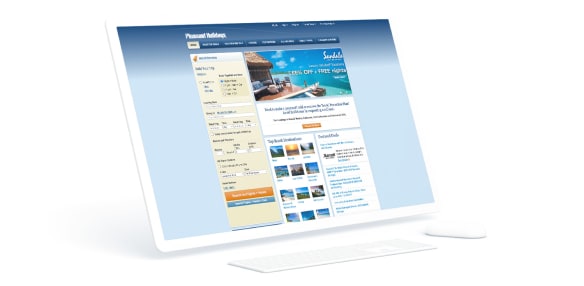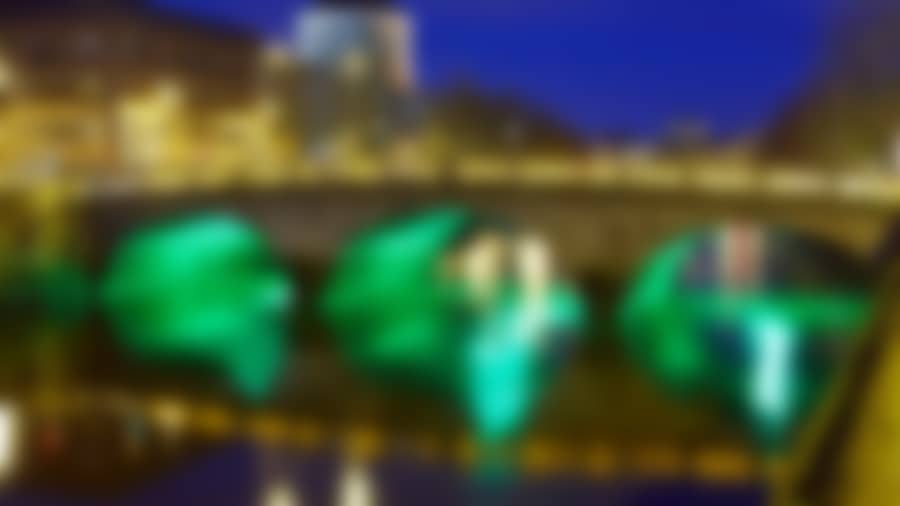About Dublin
Decadent, delightful and full of surprises, Dublin packs a punch that will leave you reeling but still wanting more.
Dublin's most enduring quality can be found in Dubliners themselves. Garrulous, amiable and witty, Dubliners are the greatest hosts of all, a charismatic bunch whose soul and sociability are so compelling and infectious that at some point during your visit you could find yourself wondering if you could stay here permanently.
Explore Ireland
Dublin, Ireland, Europe
What To Do
Outdoor exertions are surprisingly popular in this sodden city. For the literarily inclined, retracing Leopold Bloom's illustrious journey across the city is a must, but even just walking around town for pleasure is a joy. The hardier can try swimming or pit their wits against Irish fish.
What To See
Squeeze into crowded streets for close-up people-watching.
Though most people don't schedule too much gallery time into the pub crawl, Dublin museums offer a wealth of collectables. From the proverbial pot of Irish gold to the artistic riches of the Book of Kells to a host of quirky 'objets d'religious', it's a city of archives and artefacts.
Shopping
Classy crystal, chunky knitwear and off-beat artefacts.
If it's made in Ireland - or pretty much anywhere - chances are you can find it in Dublin. Fashionistas can ogle Prada frocks in Brown Thomas, young'uns can model streetwear on Grafton St and the warren of lanes to its west, while the consumer cathedral that's Dundrum has raised the retail bar.
Nightlife
It's a bit o' craic in old Dublin town.
While Dublin's nightlife has been jacked up in recent years and now includes a dizzying roundabout of trendy bars, cafes and clubs, the local pub still exerts a centrifugal pull on fun. The pub is a meeting point for friends and strangers alike, the place where Dubliners are at their most convivial.
Events
Dublin has its share of public holidays for holidays' sake along with the usual chestnuts: 1 January - New Year's Day; 17 March - St Patrick's Day; March/April - Good Friday and Easter Monday; 1 May - May Day Holiday; first Monday in June - June Holiday; first Monday in August - August Holiday; last Monday in October - October Holiday; 25 December - Christmas Day; and 26 December - St Stephen's Day.
St Patrick's Day, May Day and St Stephen's Day holidays are taken on the following Monday should they fall on a weekend.
There are two big events in Dublin each year that capture the collective imagination of all who attend. St Patrick's Day is a celebration of traditional Irish culture highlighted by a parade through Dublin and a large céilidh on St Stephen's Green that attracts thousands of revelers intent on dancing the day away.
A more modern (or, rather, Modernist) celebration occurs on 16 June each year. Bloomsday celebrates the masterwork of James Joyce - a Dubliner in exile and perhaps the greatest writer of the 20th century. The events of Joyce's novel Ulysses are set on this day, and literary buffs can spend the day retracing the steps of Leopold Bloom, the book's protagonist.
Throughout the rest of the year, Dublin keeps jumping with a variety of musical, sporting and cultural events. February sees the Dublin International Film Festival, while October hosts the Dublin Theatre Festival. Sports fans can gather at Croke Park in September for the All Ireland finals of both Hurling and Gaelic Football. September also sees hundreds of performers strutting their stuff in the Dublin Fringe Festival, while December means blowing Christmas money on the horses at the Leopardstown Races or on rides at Funderland, Dublin's traditional funfair.
Food and Drink
Ireland's largest city is also the nation's culinary capital. From the lowliest greasy-spoon diner serving the kind of deep-fried food that your arteries will resent to the fanciest Michelin-starred restaurant where eating is a veritable culinary journey, Dublin is a glutton's delight.
Health and Safety
Dublin is a safe city by any standards, except maybe those set by the Swiss. Basically, act as you would at home. However, certain parts of the city are pretty dodgy due to the presence of drug addicts and other questionable types, including north and northeast of Gardiner St and along parts of Dorset St, on the north side, and west along Thomas St, on the south side.
Weather
Dublin's maximum temperature in July and August ranges from 15-20°C (60-70°F). During January and February, the coldest months, daily temperatures range from 4-8°C (40-47°F). Major snowfalls are rare. There are about 18 hours of daylight in July and August; it's only truly dark after about 23:00. Despite being one of the driest parts of Ireland, Dublin gets rain on 150 days in a typical year and it often rains every day for weeks.
When to Go
The months either side of summer and winter are the best times to visit Dublin. Prices increase in summer and many places are shut during winter. If you're planning a trip around the St. Patrick's Day festivities remember to reserve, book, and reserve again to escape the chaos of the celebrations.
Entry Requirements
For EU and EEA nationals and citizens of most Western countries, including Australia, Canada, New Zealand and the USA, no visa is required to visit either the Republic or Northern Ireland, but citizens of India, China and many African countries do need a visa for the Republic.
Please contact the appropriate consulate for up-to-date information on travel document requirements.
Money
Euro
Getting Around
Bus Éireann is the Republic's national bus line, based at Busáras, with services all over the Republic and to the north. These fares are substantially cheaper than regular train fares but journeys take a little longer. Buses can also be caught from London, but cramped conditions and delays are a problem.
The best value if you are using the Airlink express buses from the Airport is to purchase a Rambler ticket at the airport. This will allow you to travel on the express bus and any other bus on the Dublin Bus network (apart from Nitelink, Ferry Services and Tours). There are 1,3,5, 30-day tickets available from the CIE desk in the airport and at the ticket-vending machines outside Arrivals.
Train travel is expensive and the network, while improving, is slow and poorly maintained. At least distances are short; the longest trip you can make by train from Dublin is 4.5 hours, to Tralee. Iarnród Éreann operates routes from Connolly station going north of Dublin and from Heuston station for services to the west, south and southwest.
Ferry services from Britain operate to Dublin's city ferry terminal and Dun Laoghaire's Carlisle ferry terminal on the southern side of Dublin Bay. Both terminals have good public transport connections to the city.
Dublin has Ireland's major international airport and many international airlines - including Aer Lingus, the Irish national airline, and Ryanair - have connections to countries in Europe and to the USA. Indeed, London to Dublin has overtaken London-New York and London-Paris as the busiest international air route in the world. Departure tax is included in ticket prices. There are internal flights between Dublin and Cork, Donegal, Galway, Kerry, Shannon and Sligo. Most journeys within Ireland take between 30 and 40 minutes. Dublin Airport is 10km (6mi) north of the city center. The Airlink Express Coach runs two services, to/from Busáras and the Dublin Bus offices in O'Connell St, and to Heuston and Connolly stations, both taking about 30-40 minutes. There's also the Aircoach service that runs between the airport and 15 city locations. If you're on a really tight budget, take a bus. A number of buses serve the airport from various points in Dublin, including buses 16A (Rathfarnham), 746 (Dun Laoghaire) and 230 (Portmarnock); all cross the city center on their way to the airport. Taxis are subject to all sorts of additional charges for baggage, extra passengers and 'unsocial hours'.
Dublin's extensive bus system (usually yellow double-deckers) radiates from the city center to the vast suburbs surrounding it. While it's easy to travel from almost anywhere in outer Dublin into the city center, very few buses travel east-west across town, necessitating a trip into town and then out again. Dublin Bus also runs airport, Nitelink and sightseeing tours. Costs vary and tickets can be purchased at over 350 ticket agents throughout the city or in the Dublin Tourism Centre. If you do not have a ticket, you will need exact change to buy a ticket on the bus - the driver will let you know how much you owe, depending on how far you are going.
Taxis are expensive, and a perennial shortage means it can be hard to catch one, especially around the weekend after the pubs close.
With severe congestion, scarce parking, diligent traffic wardens and even more committed car thieves, it's hardly worth driving in central Dublin. But for excursions, a car can be a great way to get off the beaten track, particularly on Sundays when public transport is infrequent.
Traffic in Dublin is a nightmare and car parking is an expensive headache. Clamping of illegally parked cars is thoroughly enforced, with a charge for removal. Car theft and break-ins are a problem, with foreign number plates prime targets; never leave your valuables behind. Car rental in Dublin is expensive. In July and August it's wise to book well ahead. Motorbikes and mopeds are not available for rent.
Dublin Bus runs buses across Dublin. Fares are calculated according to stages. Nitelink late-night buses run from the College St, Westmoreland St and D'Olier St triangle from Monday to Saturday.
All taxi fares begin with a flagfall fare, followed by a charge per unit (one-sixth of a kilometer or 30 seconds) thereafter. Taxis can be hailed on the street and are found at taxi ranks around the city, including O'Connell St, College Green in front of Trinity College and St Stephen's Green at the end of Grafton St. There are numerous taxi companies that will dispatch taxis by radio. Weekends and late nights are notoriously hard times to find a cab.
The Dublin Area Rapid Transport (DART) provide bus and train services across Dublin. All rail information, including timetables and ticket and pass sales, is available from the Rail Travel Centre. The city has two main train stations: Heuston Station, on the western side of town near the Liffey, and Connolly Station, a short walk northeast of Busáras, behind Custom House. The brand-new Luas light-rail system has two lines: the green line, which connects St Stephen's Green with Sandyford in south Dublin via Ranelagh and Dundrum; and the red line, which runs from Lower Abbey St to Tallaght via the north quays and Heuston Station. There are ticket machines at every stop or you can buy a ticket from newsagents throughout the city center.
Rust-red cycle lanes throughout the city make cycling in Dublin easier than ever, although traffic congestion, motorised maniacs and roadworks can make the city something of an obstacle course. Bike theft is a problem. Never leave your bike on the street overnight. Bike rental is available through several outlets, though it has become increasingly difficult to find due to crippling insurance costs.
Travel Tips & Tools


You will be transferred to our traditional site.
We are currently working on enhancements to this part of our website. A new version will be available soon. Don’t worry – switching over will not interrupt your booking.
Welcome to the all-new Pleasant Holidays booking experience !


You can now plan your next vacation with our exciting new booking engine. Some advanced features are still being developed, and selecting these options may require you to return to our traditional booking experience. Don’t worry – switching over will not interrupt your booking.
We've updated your online experience to make sure you can get your dream vacation. Since our makeover is still in progress, you may experience shifts from our traditional booking experience to our new one.
Contact us
Any questions ?
Our travel advisors will be happy to help!

















































